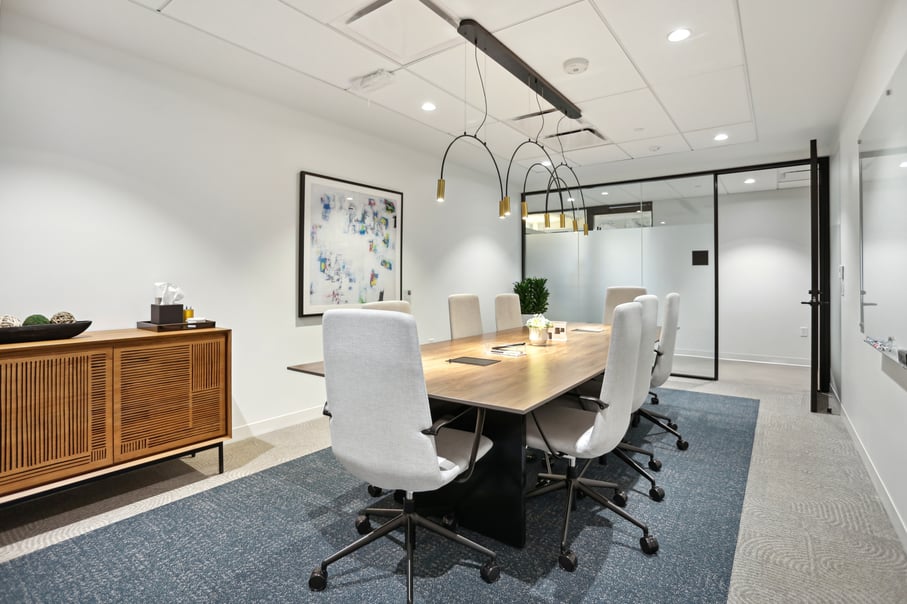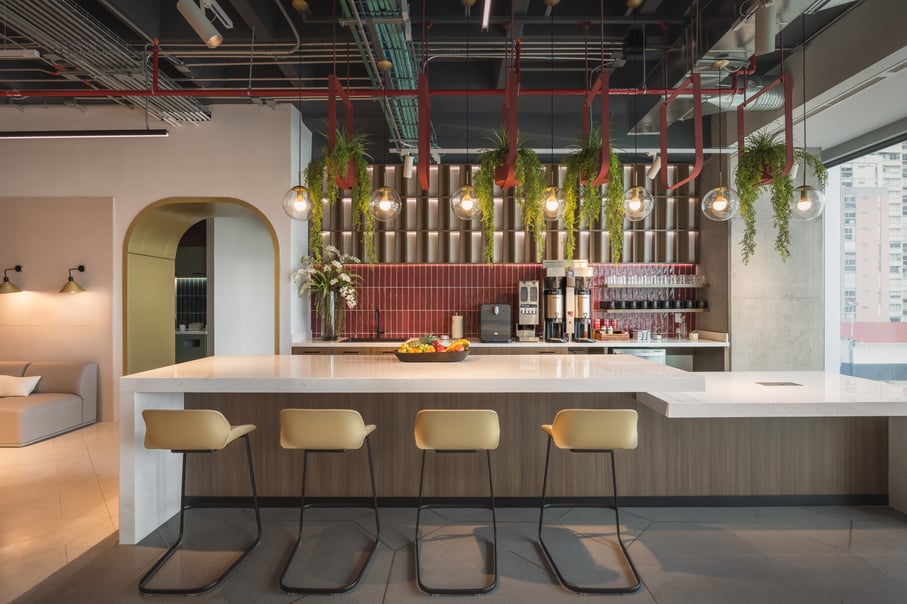Agile Offices: Redefining Leasing with a Hybrid Touch
The office has shifted from an obligation to a destination—and leasing strategy should follow suit.
What’s the point?
Employee habits are changing, and design is not the only thing that needs to evolve to keep up. In a world of agile work, conventional leasing structures may no longer be the right fit for many companies. Enter flexible leasing, a powerful new way for businesses to drive experience, efficiency, and performance in the future of work.
Changing occupancy, changing lease strategy
In the ongoing move to flexible work, many organizations have been stuck on a roller coaster of workplace occupancy. Depending on the day, week, or month, some offices sit half-empty, while at other times, they are overcrowded. Now and then, the space is filled with just the right number of people – but it is anyone’s bet when that will happen again.
Is there an off-ramp from this dilemma? Part of the answer comes from data – specifically, tracking daily office utilization rates. Armed with this data, leaseholders gain powerful insight into how much and what kind of space their company needs, and when it needs it. As a direct result, trends suggest that many corporate occupiers plan to reduce the square footage of long-term office space—while taking steps to augment it with a mix of additional mid-term, short-term, and on-demand space.

In today's evolving work landscape, an office space like The Square at The Bowen Building stands out as a modern solution for both permanent and hybrid work arrangements.
All this calls for a new approach to leasing strategy. Why? Historically, a company would lease space to accommodate current headcount and general company growth projections. In this highly static process, the 10 to 15-year lease took months to negotiate, involved dozens of people, and was forgotten about until a year before it was time to renew.
Now, however, companies are reallocating square footage to deliver smaller headquarters, along with additional options like coworking spaces and short-term “swing” spaces. For a variety of reasons, it makes more business sense to lease space from a single landlord where possible. After all, multiplying the number of leases to manage is operationally burdensome and time-consuming. Juggling multiple leases might also impact talent experience strategy, by hampering the ability to create consistent and high-quality environments across different spaces.
The good news? Forward-looking landlords are finding fresh ways to provide long-term, medium-term, short-term, and on-demand spaces within a single hybrid lease agreement.
“It is a smart strategic move right now to reduce long-term overhead costs yet build in the flexibility that the occupier needs to ensure a seamless experience for their people,” says Annie Draper, Director of Hines Workplace Services.

Corporativo Neuchâtel offers top-tier flexible office solutions, along with a diverse range amenities like a gym, conference facilities, and library to enhance urban employee lifestyles.
How a hybrid lease can work for you
A strategic hybrid lease can help organizations accommodate high and low-occupancy days alike, while providing a variety of engaging workplace options that complement the company’s brand and culture.
For example, The Square’s location at Corporativo Neuchatel in Mexico City combines hospitality-driven property management and high-quality furnished offices and suites in a cutting-edge urban campus experience. Here, hybrid leasing is built-in, with flexible memberships by the hour, day, month, or year, available across a variety of floorplans, all designed to accommodate company sizes ranging from start-ups to larger enterprises.
“Think of the hybrid lease as a master services agreement or another type of corporate contract, where there’s a main agreement and then contractual addenda that are added on an ‘as-needed’ basis,” says Draper.
Evolving leasing strategy for the future of work
Flexible work is changing employee expectations—and corporate real estate strategy at the same time. Occupancy data allows leaseholders to reevaluate leasing practices and consider what is working, and what must evolve.
By working with a landlord whose leases are more efficient and better suited to the purpose-driven office of today, business leaders can drive employee experience—while sparking positive business outcomes across the board.
This blog post first appeared in The Point on Hines.com.
